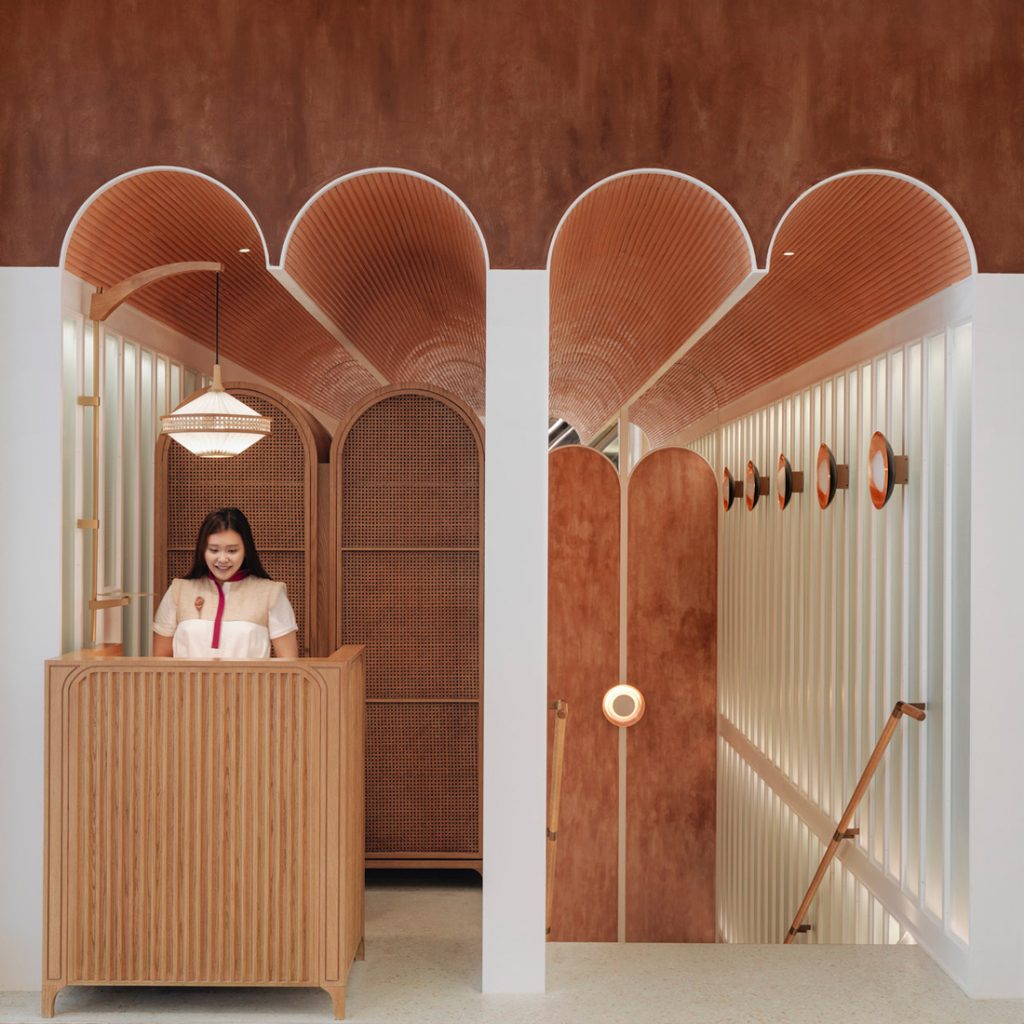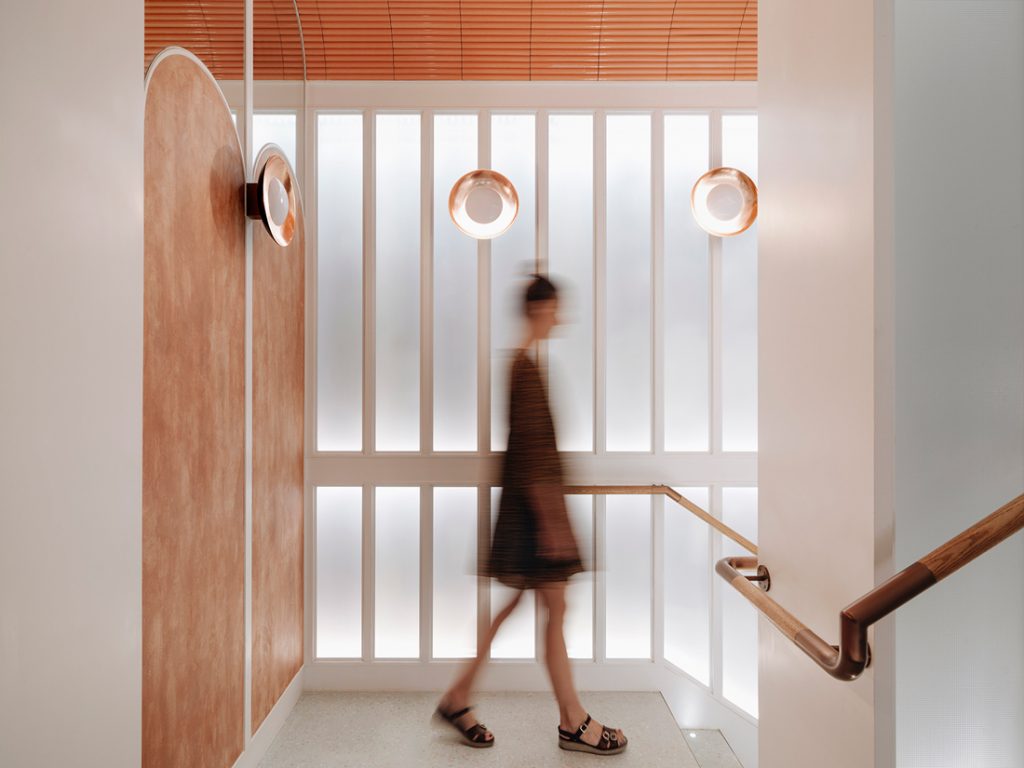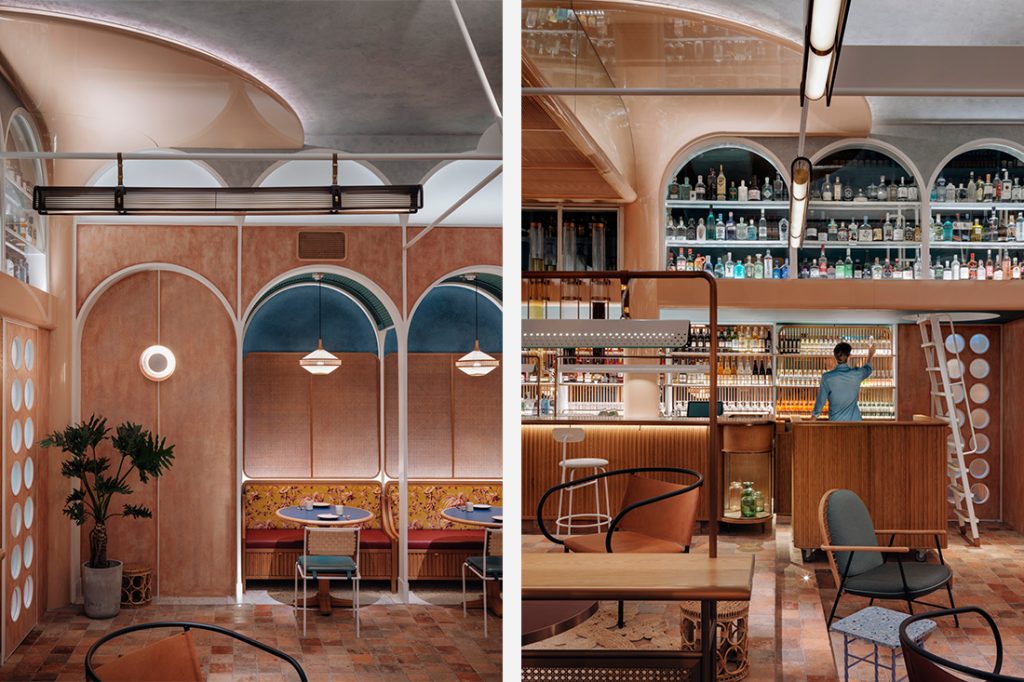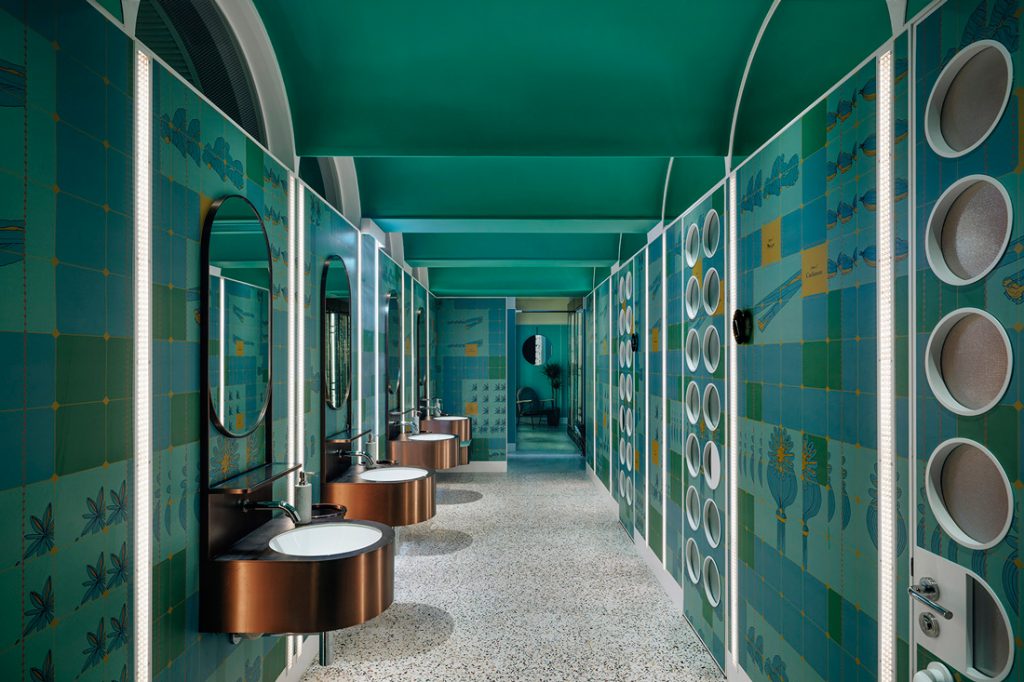Bringing colonial design flavours in a thoroughly modern execution, John Anthony restaurant by Linehouse is a feast for the eyes.
John Anthony is not only a feast for the taste buds, but also for the other senses. The textures, patterns, shapes and colours fused together by Linehouse create a sensory potpourri that makes the eyes wander and entices touch.
The contemporary dim sum restaurant, opened by Maximal Concepts, is named after the first Chinese man to be naturalised as a British citizen in 1805. The employee of the East India Company sojourned from the East to London’s docklands to take care of lodging and food for arriving Chinese sailors in Limehouse’s Chinatown.
The restaurant’s design is a spatial representation of his journey, hence the eclectic styles with hints of colonial architecture and Eastern detailing – or what the studio describes as “British tea hall turned Chinese canteen.” As such, formal elements meld with more quotidian components.

The restaurant is situated in a basement. Guests walk down a flight of stairs wrapped in white metal and diffused glass lit from behind. A motif of curves (applied throughout the restaurant) begins here, where arches define the reception area and stairwell entry, and circular lighting sconces act as focal points on the walls. Honey-toned terracotta rendered walls continue into the restaurant, where pink tiles clad the triple-height arched ceiling and lime-green terrazzo covers the floor.

“The main dining hall is an interpretation of storehouses in the docklands. The modern vaulted space plays on verticality, lightness and has a sense of whimsy with circular canopy columns in a dusty pink lacquer, and white metal arches surrounded by terracotta render,” describes the design team at Linehouse.
These ceiling details, with the diffused glass arches backlit, create the illusion of daytime so the space doesn’t feel claustrophobic even though there are no windows. They also help to define zones. For instance, domed cubicles above the bar highlight its expansive gin collection infused with blends of botanicals found along the Spice Route.

Another area is delineated by a steady rhythm of arches clad in green handmade tiles. These dip down at the booth seating to create alcoves. Billowing hand-dyed indigo linen enveloping the ceiling references nautical imagery and lends softness to the space while the moodier tone enhances the sense of intimacy.
Throughout, wicker, translucent glass and floral fabrics on the furniture and joinery recreate the relaxed mood of colonial interiors. Lending a graphic touch and a sense of old-world romance to the private dining rooms are large-scale illustrations on hand-painted tiles featuring commodities traded between the British and Chinese in the eighteenth century, such as medicinal poppies and exotic animals.

These lively encounters continue into the bathrooms, where green, mustard and turquoise pictorial laminates, custom-mounted vanities, a green, arched ceiling and recycled plastic tubes (lining the ceiling of the toilet stalls) reference the spice trade. The latter is part of the project’s sustainability agenda. It accompanies waste plastic and paper upcycled into coasters and menus, floors tiled with reclaimed terracotta from abandoned houses in rural China, as well as eco rattan. Similarly, the restaurant’s ingredients are sustainably sourced.
With so much going on, it may have been easy for the space to end up a confused spectacle. Under the deft hands of Linehouse, the restaurant is a delectable, idiosyncratic dish layered with history and topped with playfulness, excitement and mystery.
INDESIGN is on instagram
Follow @indesignlive
A searchable and comprehensive guide for specifying leading products and their suppliers
Keep up to date with the latest and greatest from our industry BFF's!

XTRA celebrates the distinctive and unexpected work of Magis in their Singapore showroom.

Schneider Electric’s new range are making bulky outlets a thing of the past with the new UNICA X collection.

In this candid interview, the culinary mastermind behind Singapore’s Nouri and Appetite talks about food as an act of human connection that transcends borders and accolades, the crucial role of technology in preserving its unifying power, and finding a kindred spirit in Gaggenau’s reverence for tradition and relentless pursuit of innovation.

With the exceptional 200 Series Fridge Freezer, Gaggenau once again transforms the simple, everyday act of food preservation into an extraordinary, creative and sensory experience, turning the kitchen space into an inspiring culinary atelier.

Taking cues from Harry Seidler’s materials and curving corridors as well as luxury hotels and hospitality design, GroupGSA has completed a new suite of offices in Sydney.

The Hub, Australia’s largest private workspace operator, has 16 locations across the country. Their newest site – designed by Architectus and Hassell – puts Perth’s unique context front and centre.
The internet never sleeps! Here's the stuff you might have missed

Bunbury, Albany and Subi East are among the sites taking out prizes at the Australian Institute of Landscape Architects (AILA) Western Australian Chapter Awards.

Gaggenau’s understated appliance fuses a carefully calibrated aesthetic of deliberate subtraction with an intuitive dynamism of culinary fluidity, unveiling a delightfully unrestricted spectrum of high-performing creativity.